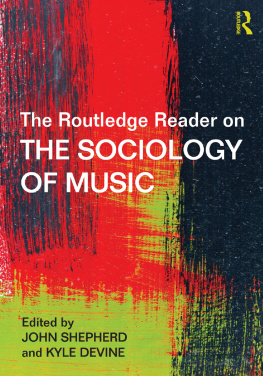Alexander Robey Shepherd
Alexander Robey Shepherd
The Man Who Built the Nations Capital
John P. Richardson
Foreword by Tony Williams
PUBLISHED FOR THE
UNITED STATES CAPITOL HISTORICAL SOCIETY
BY OHIO UNIVERSITY PRESS
ATHENS
Ohio University Press, Athens, Ohio 45701
ohioswallow.com
2016 by John P. Richardson
All rights reserved
To obtain permission to quote, reprint, or other wise reproduce or distribute material from Ohio University Press publications, please contact our rights and permissions department at (740) 593-1154 or (740) 593-4536 (fax).
: Henry Ulke 1871 oil portrait depicts Alexander Shepherd as head of the Board of Public Works. (Courtesy of Krystal Branton, Office of D. C. City Council Member Jim Graham)
Printed in the United States of America
Ohio University Press books are printed on acid-free paper

25 24 23 22 21 20 19 18 17 16 5 4 3 2 1
Library of Congress Cataloging-in-Publication Data
Names: Richardson, John P., author.
Title: Alexander Robey Shepherd : the man who built the nations capital / John P. Richardson ; foreword by Tony Williams.
Description: Athens, OH : Ohio University Press, [2016] | Includes bibliographical references and index.
Identifiers: LCCN 2016024887| ISBN 9780821422496 (hc : alk. paper) | ISBN 9780821422502 (pb : alk. paper) | ISBN 9780821445891 (pdf)
Subjects: LCSH: Shepherd, Alexander Robey, 18351902. | Washington (D.C.)Politics and government19th century. | MayorsWashington (D.C.)Biography. | Territorial governorsUnited StatesDistrict of ColumbiaBiography. | District of Columbia. Board of Public WorksBiography. | Public worksWashington (D.C.)History19th century. | Washington (D.C.)History19th century.
Classification: LCC F198.R525 2016 | DDC 975.3/02092 [B] dc23
LC record available at https://lccn.loc.gov/2016024887
Contents
Foreword
I FIRST CAME close to Alexander Shepherd many years ago when I researched a presentation on city maps I was to give at the Library of Congress. I was amazed at the painstaking detail, captured in various maps, in converting Washington from a Civil War casualty into a modern city. As an inveterate walker of Washingtons streets and boulevards, I get another view of Shepherd. I delight in my own reaction shots of a visitors embrace of the National Capital, the awe of a tourist looking skyward to the Washington Monument, the reverence of the school child at the steps of the Lincoln Memorial, and the enchantment of the convention attendee taking in the Mall for the first time.
And then theres the quizzical look of the sightseer viewing the bronze statue of Alexander Shepherd in front of the Wilson Building in downtown Washington, D.C. The look tells you every thing you need to know about what the average American doesnt know about the establishment of the Washington, D.C. of today.
Im often asked about the statue. Who was Shepherd? Why was he important? What impact did he have? He only served a relatively short time, and yet was of enough consequence to earn a statue on Pennsylvania Avenue! Fortunately, I can now confidently refer inquirers to this wonderful biography of Shepherd by my friend John Richardson.
Shepherds story, told in this book with skill and confidence, is at once the story of a great American character, with all his great achievementsbold, visionary, pragmatic, entrepreneurial; and notable flawsracially insensitive, ethically myopic, and not infrequently, completely unrealistic. After all, how many political figures retire to Mexico to single-handedly establish a silver mining operation, using state of the art technology?
And its also the story of a great and complex American citys recovery from the Civil War, growth in the Industrial age, and implementation of one of the worlds greatest urban plans. In short, its how Washington became a city.
A larger than life figure in an impossibly difficult situation, Shepherd made things happen, and Richardson tells us how. In a way, Shepherd was the ultimate homebuilder, building the Washington that today is the home for the worlds largest diplomatic corps, the home of the federal government, and the home to District citizens and residents.
At a time when Washington struggles to get the basics done, at a point where risk avoidance is all too prevalent, and in an era when confidence in government is at an historic low point, its good to know that theres another story. We can turn challenge into opportunity, economic despair into hope. Shepherd did all this, and John Richardson shows us how.
Tony Williams
Mayor of Washington, D. C., 19992007
Preface
ALEXANDER ROBEY SHEPHERD built the infrastructure of the nations capital after the Civil War, which had torn the country apart and left Washington, D.C., a muddy, treeless place. The stresses of the Civil War exposed the physical inadequacies of the city in the face of postwar demands for a national capital able to represent the aspirations of the reunited nation. Shepherds actions made it possible to realize the grand design for Washington, D.C., of Peter Charles LEnfant, the French-born engineer appointed by President George Washington in 1791 to plan the new Federal City as it was then known. The lack of congressional financial support had kept the citys infrastructure largely undeveloped and had prevented the realization of LEnfants vision. Much of Shepherds work, carried out hastily, had to be redone, but he initiated critical changes that would not be reversed.
Shepherds methods, motivation, competence, and integrity are still debated, but he did succeed in making the capital a handsome, workable city and, in the process, overcame threats to remove the seat of government to a location closer to the center of the nation. In a brief but remarkably active period as chairman of the Board of Public Works and a short nine months as territorial governor (187374), he put flesh on the bones of LEnfants design for an elegant, European-style capital. In doing so, Shepherd succeeded in his most important goal of making Washington a workable city. He also achieved his second objective, (although the result was subject to reversal): forcing Congress to accept responsibility for maintaining and improving the city where it met. This narrative follows the events of Shepherds life as closely as available records permit, and much of the story is told in the words of major participants and close observers.
While much is known about the whirlwind years during which Shepherd brought change to Washington, less is known about his final twenty-two years, lived in a remote mining town deep in the Sierra Madre Mountains of Mexico. Even less well known is that Shepherds Mexican silver-mining operationintended to restore his fortune and permit a triumphal return to Washingtonproved a disappointment that hyperbolic press reports about his lucrative Eldorado in the wilderness could not overcome. While the setting for his labors shifted dramatically, Shepherd lived by the same set of principles in Mexico as he had in Washington. The nature of the challenges was different, but Shepherd, once having identified an objective, brought intensity and energy to the task. The same intensity and energy that made it possible for him to overcome obstacles that would have defeated a lesser man proved to be weaknesses, because he was constitutionally incapable or unwilling to question the choices he made.















